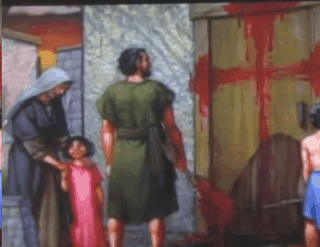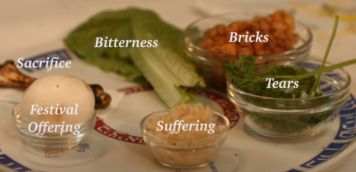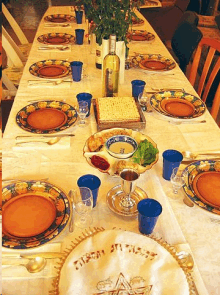1. When John the Baptizer saw Jesus coming towards him, John exclaimed, "Behold, the Lamb of God Who takes away the sin of the world!" (John 1:29b).
2. Paul called Christ our Passover in 1Cor. 5:7b (Christ, our Passover Lamb, has been sacrificed).
3. The Passover lamb is with the family for a few days in part to scrutinize the lamb for any blemishes and also so that they might grow some attachment for the lamb. Jesus Christ was under public scrutiny (some of it hostile) for a period of three or four years during His earthly ministry and He was found to be blameless in all things. The charges brought against the Lord in order to get Him to the cross were phony. Jesus had broken no laws. Luke 11:53–54 John 8:46 18:38 1Peter 1:18–19 2:22 3:18.
4. The lamb, having been tested (inspected for defects), must be slain (Exodus 12:6 Matt. 16:21 John 12:24 Heb. 9:22). The blood of the lamb must be used in order for God to pass over the house. There is no other way for any family of Hebrews (or Egyptians) to be passed over; including invoking a deity of Egypt. The writer of Hebrews warns us that, ...without the shedding of blood there is no forgiveness of sins. (Heb. 9:22b) God sees the blood of the lamb, representing the blood of Jesus Christ, and He does not take the life of their first-born. The great tragedy to the unbeliever—even more than losing one’s firstborn—is to spend eternity in hell, burning in judgment, separated from God.
5. As per Scofield, this ritual "refutes universalism" (Exodus 12:7, 12b John 3:36 Acts 4:12). For the Jew (and any Egyptian household that followed suit), applying the blood was proof of their faith in Yehowah and God's Word (as spoken by Moses). It was a sign of their faith but not the means of their salvation (Exodus 12:13 Heb. 9:11-14, 22, 28).
6. Salvation is by faith alone in Christ alone, as He took upon Himself the punishment for our sins (we thus bypass the judgement due us). This deliverance from judgment is illustrated by the application of the blood around the door, which caused Yehowah to pass over their household. God refrained from executing judgement upon those in the house. Exodus 12:13 Heb. 9:13–14 (For if the blood of goats and bulls, and the sprinkling of defiled persons with the ashes of a heifer, sanctify for the purification of the flesh, how much more will the blood of Christ, who through the eternal Spirit offered Himself without blemish to God, purify our conscience from dead works to serve the living God.) Heb. 10:10 1John 1:7
7. The blood of the first Passover is put on the top of the door sill (which would drip to the threshold) and on both sides of the door. This picture foreshadows the cross, foreshadowing the bleeding of Jesus from His feet, His hands and His head. The application of the blood foreshadows in the True Passover (Jesus dying for our sins). Exodus 12:22 1Cor. 5:7

Blood on the Header and Side Posts of the Door Foreshadows the Cross (a graphic); from Blogspot; accessed March 31, 2021.
8. The feast afterwards was a foreshadowing of our memorial supper, the Eucharist (which foreshadows eternal fellowship with God).
9. The eating of the flesh of the slain lamb is analogous to believing in Jesus Christ, as eating is the non-meritorious function which all humans are able to do. Today, we eat the bread as Christ's body, to illustrate our faith in Jesus Christ, Who is the bread of life (Matt. 26:26-28 John 6:31-35, 46–58, 19:18 1Cor. 11:23–26).
a. As an aside, the bread does not actually become Christ body.
b. This heresy came about because some person did not understand the concept of a metaphor (hundreds of figures of speech are found throughout the Scriptures).
10. Scofield: To observe the feast [of the Passover] was a duty and a privilege but not of condition of safety. Nor is eating the meat (or bread) salvation; those things are analogous to salvation. 1Cor. 10:16 11:25 Rev. 13:8
11. One of the most chilling phrases found in Exodus is Exodus 12:6b, when speaking of the Passover lamb, reads: Then the whole assembly of the congregation of Israel is to kill it. Can’t you just hear in those words the Jews in a.d. 33 calling for Jesus to be crucified?
Scofield quotes are from https://biblehub.com/commentaries/sco/exodus/12.htm accessed December 9, 2020.
All Bible quotes are from the ESV (capitalized).

